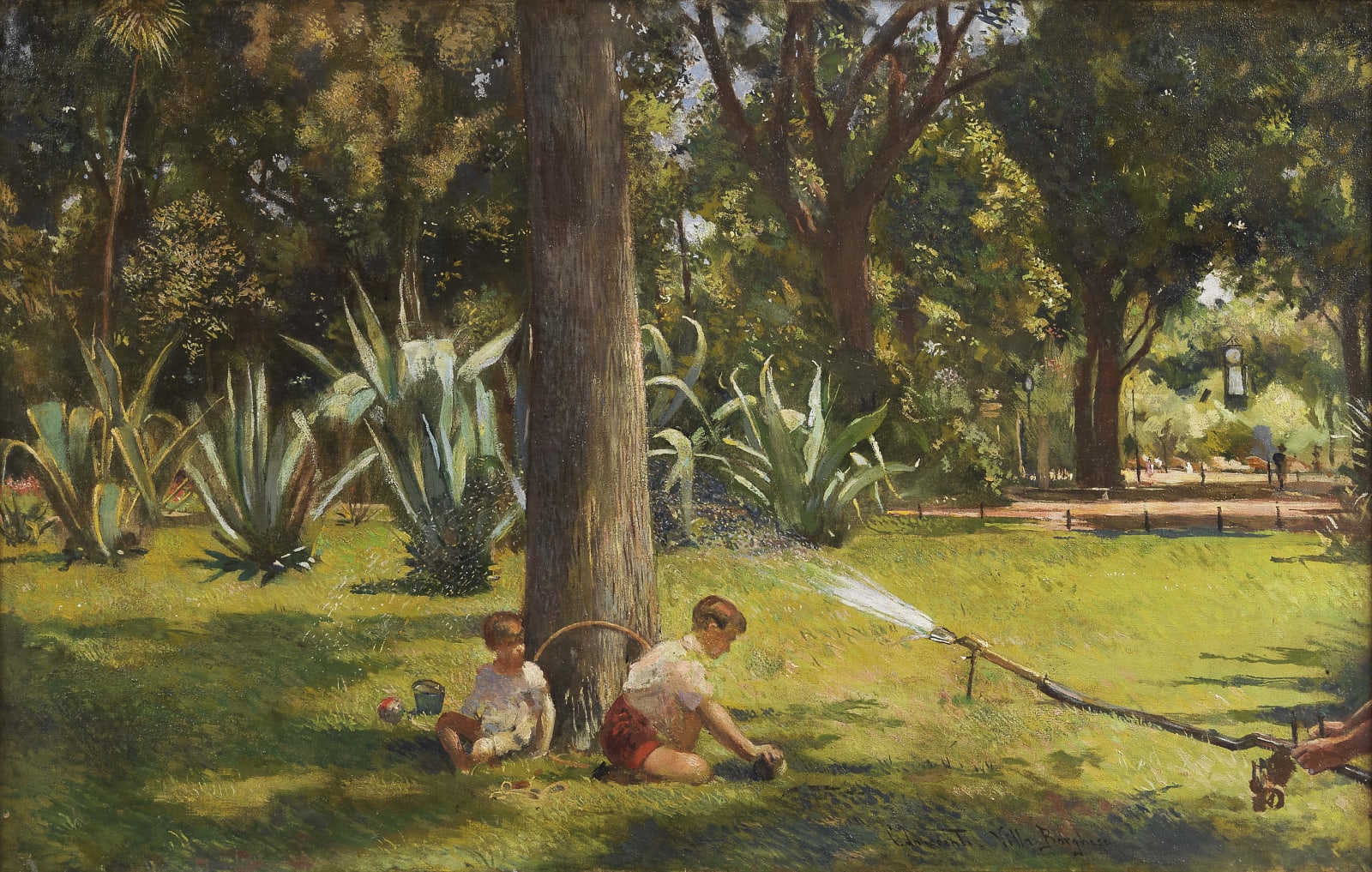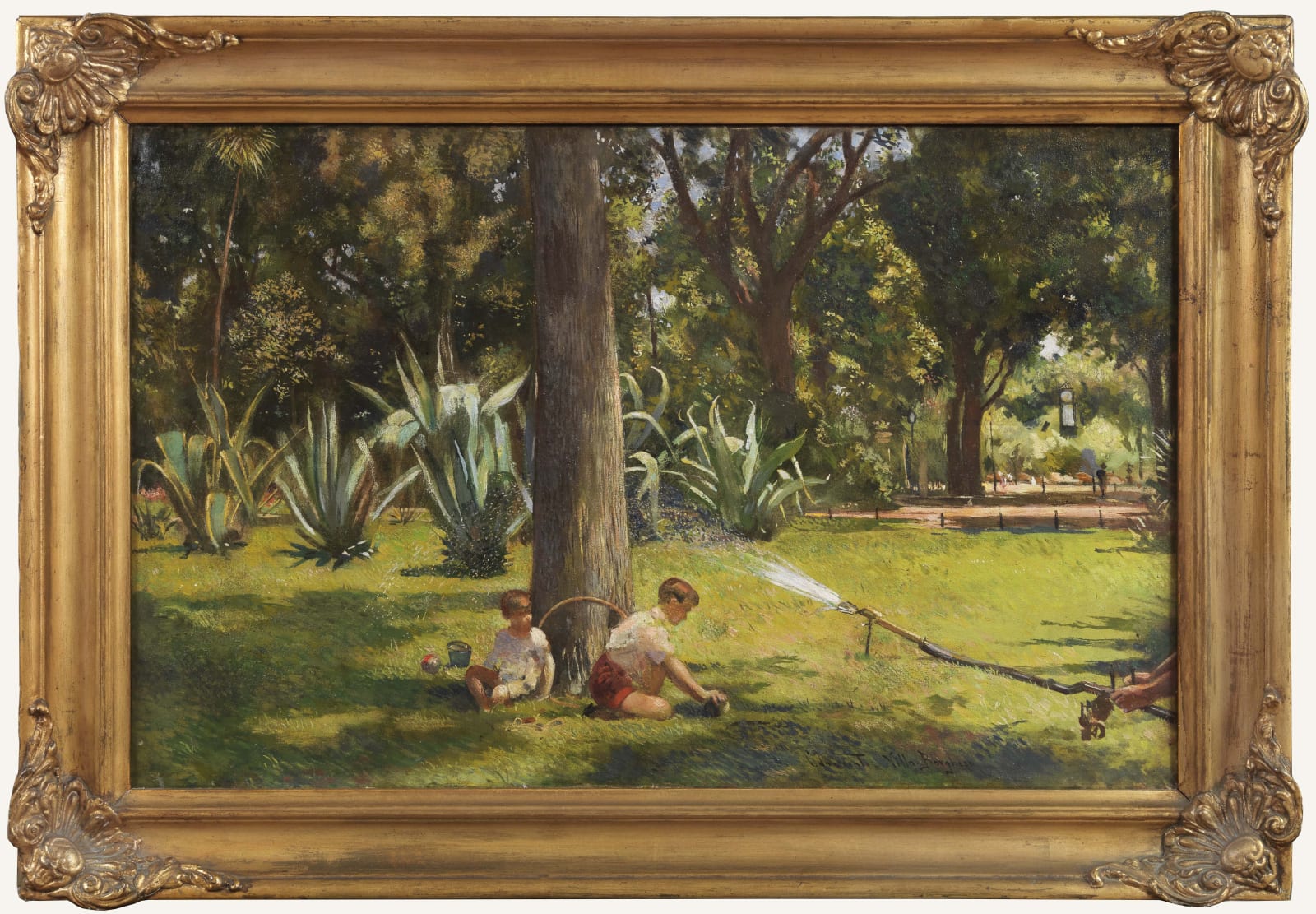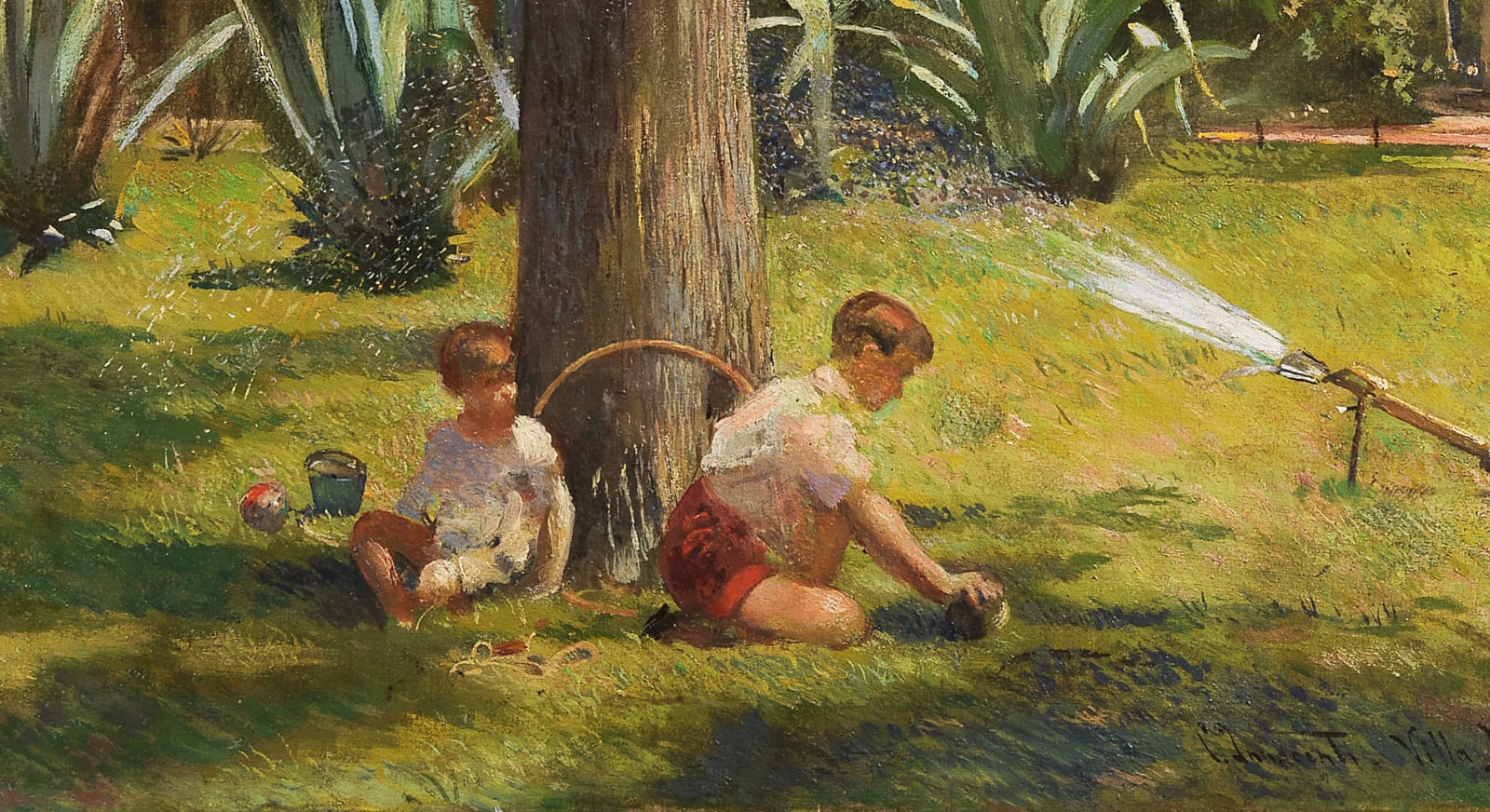Camillo INNOCENTI 1871-1961
Further images
Literature
Bibl.: Divisionismo romano,Rome, De Luca Edizioni d’Arte,1989
L. DjokicTitonel- M. Fagiolo dell’Arco,Camillo Innocenti 1871 – 1961, Rome, Galleria Campo dei Fiori, 1993
Adopting a highly unusual viewpoint, Camillo Innocenti has chosen a corner of the Pincio gardens in Rome as his setting for two children playing on a warm summer's day.
Two children, probably siblings, are taking a break from their games at the foot of a large tree while, with an extremely original twist, a gardener whose hands alone are visible is plying a hose, its jet of water reflecting the light in a manner recalling the technique known as pointillisme.
We are left in no doubt as to the setting thanks to the presence of the celebrated water clock that Innocenti has placed on the right of his composition. This ingenious water-driven timepiece was designed by Father Giovanni Battista Embriaco (Ceriana, 1829 – Rome, 1903), a Dominican friar from Liguria who also had a passion for clocks. He invented this particular water clock in 1867 but it was only installed on the Pincio in 1872.
It has fascinated, and indeed continues to this day to intrigue, generations of Romans and tourists as they stroll in these gardens commissioned by Napoleon and laid out by Giuseppe Valadier.
After studying classical Camillo Innocenti directed towards art and, in 1898, winning the senior national, was admitted to the Academy of Fine Arts in Rome. There he devoted himself to painting with passion but, disillusioned teachings too academic, naturally inclined to paint a more fresh and instinctive, first came under the influence of Domenico Morelli, then Francesco Paolo Michetti and finally by Antonio Mancini which formed a deep friendship.
In 1901 he went to Spain where he stayed to study the paintings of Goya and Velazquez, completing its artistic maturity or by copying the works of these great masters is portraying the true popular scenes and landscapes. Later lived and studied in Germany, France, Holland and England increasingly refining their artistic sensibility. He returned to Italy in 1903 where he joined the group of "XXV" of the Roman Campagna. His favorite subjects were the Pontine Marshes with features scenes of daily life, the rugged landscapes of Abruzzo and Sardinia.
He devoted himself to painting intimate, with interiors inspired by works depicting female figures similar to Art Nouveau and D'Annunzio for the refined harmony of colors and whites hold soft. During this period, excelled in the art of Rome and was named the Academy of St. Luke.
In 1925 he moved to Egypt at Cairo with the position of Director of the School of Fine Arts He returned to Rome after fifteen years in Africa, but now out of the circuit of Roman art, was no longer able to dominate, dying in poverty in 1961.
Exhibited at the Venice Biennale in 1905 and that of 1909, was present at the II Biennale Roman and Roman of the Seventh Quadrennial 1956. Are known to certain investments Exhibition in Paris. His works are kept in Rome at the National Gallery of Modern Art, the Municipal Gallery of Modern Art and the National Gallery of the Accademia di San Luca; Ascoli Piceno, Art Gallery; Palermo, Gallery of Modern Art; Udine, Gallery of Modern Art; Piacenza, Galleria Ricci - Oddi.
JOIN OUR MAILING LIST
Subscribe to our mailing list in order to receive news on new acquisitions, exhibitions, special previews and more!
* denotes required fields
We will process the personal data you have supplied to communicate with you in accordance with our Privacy Policy. You can unsubscribe or change your preferences at any time by clicking the link in our emails.





